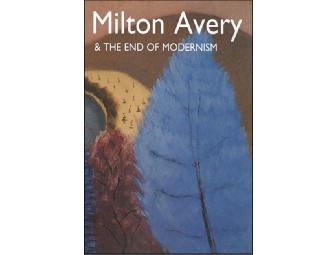Catalogues
Milton Avery: At the End Of Modernism
- Item Number
- C-7
- Buy Now Price
- 20 USD
- Quantity Available
- 0
- Sold
- 0
Item Description
Exhibition catalog featuring the work of Milton Avery, an artist who brought the sketch, with its spontaneity, movement, and fleetingness, to the status of a finished painting.
“I try to construct a picture in which shapes, spaces, colors, form a set of unique relationships, independent of any subject matter. At the same time I try to capture and translate the excitement and emotion aroused in me by the impact with the original idea.” — Milton Avery
Milton Avery and the End of Modernism looks at work by the artist who brought the sketch, with its spontaneity, movement, and fleetingness, to the status of a finished painting. The works reproduced in this exhibition catalog feature Avery’s intense saturated color fields, the simplification of form, and figures that emphasize the flatness of canvas surface.
In the four chapters that open the catalog, Karl Emil Willers takes a concerted look at the contributions of Milton Avery as a significant figurative painter from the late 1920s through the early 1960s, and at the development of Avery’s signature paintings from his idiosyncratic drawing style that captures the essence of a person, place, or time. Placing Avery’s work within a long history of modernist practice that recognizes the artist’s sketch as a “final, complete and a self-sufficient work of art,” Willers argues that, within the emergence of his avant-garde style, Avery can be seen as one of the preeminent American painters of his time, exerting great influence among both his contemporaries and subsequent generations of artists.
Regarding Avery’s place in American art history, Patterson Sims has written: “Early in Avery's career, when Social Realism and American Scene painting were the prevailing artistic styles, the semi-abstract tendencies in his work were viewed by many as too radical. In the 1950s, a period dominated by Abstract Expressionism, he was overlooked by critics because of his adherence to recognizable subject matter. Nevertheless, his work, with its emphasis on color, was important to many younger artists, particularly to Mark Rothko, Adolph Gottlieb, Barnett Newman, Helen Frankenthaler, and other Color Field painters.”
Samuel Dorsky Museum of Art stores data...
Your support matters, so Samuel Dorsky Museum of Art would like to use your information to keep in touch about things that may matter to you. If you choose to hear from Samuel Dorsky Museum of Art, we may contact you in the future about our ongoing efforts.
Your privacy is important to us, so Samuel Dorsky Museum of Art will keep your personal data secure and Samuel Dorsky Museum of Art will not use it for marketing communications which you have not agreed to receive. At any time, you may withdraw consent by emailing Privacy@frontstream.com or by contacting our Privacy Officer. Please see our Privacy Policy found here PrivacyPolicy.

